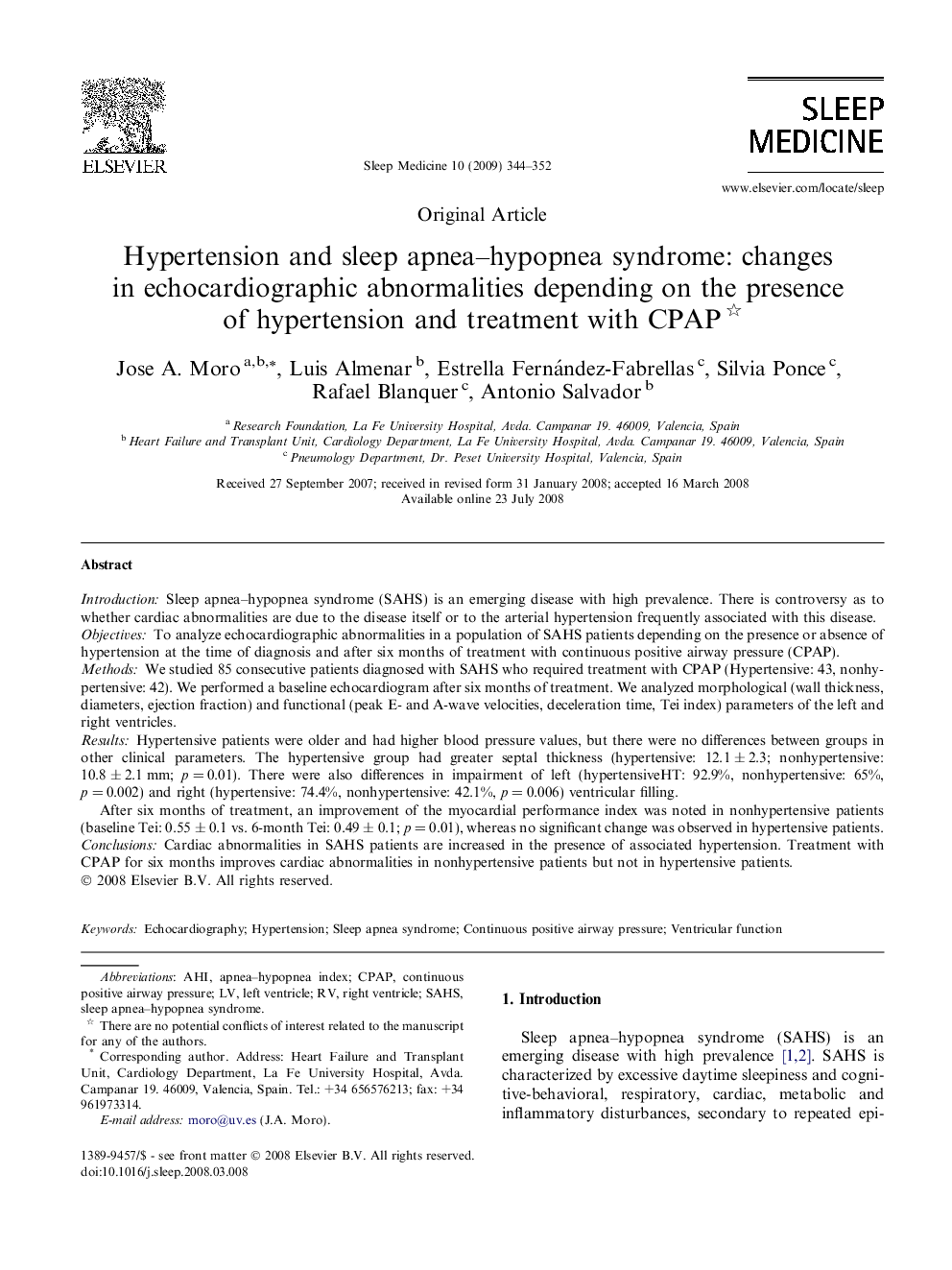| Article ID | Journal | Published Year | Pages | File Type |
|---|---|---|---|---|
| 3177709 | Sleep Medicine | 2009 | 9 Pages |
IntroductionSleep apnea–hypopnea syndrome (SAHS) is an emerging disease with high prevalence. There is controversy as to whether cardiac abnormalities are due to the disease itself or to the arterial hypertension frequently associated with this disease.ObjectivesTo analyze echocardiographic abnormalities in a population of SAHS patients depending on the presence or absence of hypertension at the time of diagnosis and after six months of treatment with continuous positive airway pressure (CPAP).MethodsWe studied 85 consecutive patients diagnosed with SAHS who required treatment with CPAP (Hypertensive: 43, nonhypertensive: 42). We performed a baseline echocardiogram after six months of treatment. We analyzed morphological (wall thickness, diameters, ejection fraction) and functional (peak E- and A-wave velocities, deceleration time, Tei index) parameters of the left and right ventricles.ResultsHypertensive patients were older and had higher blood pressure values, but there were no differences between groups in other clinical parameters. The hypertensive group had greater septal thickness (hypertensive: 12.1 ± 2.3; nonhypertensive: 10.8 ± 2.1 mm; p = 0.01). There were also differences in impairment of left (hypertensiveHT: 92.9%, nonhypertensive: 65%, p = 0.002) and right (hypertensive: 74.4%, nonhypertensive: 42.1%, p = 0.006) ventricular filling.After six months of treatment, an improvement of the myocardial performance index was noted in nonhypertensive patients (baseline Tei: 0.55 ± 0.1 vs. 6-month Tei: 0.49 ± 0.1; p = 0.01), whereas no significant change was observed in hypertensive patients.ConclusionsCardiac abnormalities in SAHS patients are increased in the presence of associated hypertension. Treatment with CPAP for six months improves cardiac abnormalities in nonhypertensive patients but not in hypertensive patients.
